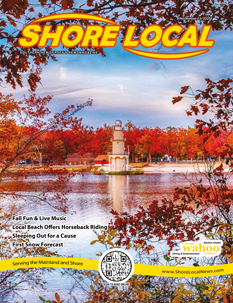Drink Up!
By David Setley
I tasted Malbec wine from Argentina for the first time nearly 20 years ago and was amazed at how rich, smooth, and reasonably priced it was. I spoke with friends about it, but few had heard of the varietal, making me feel like I had discovered the next big thing in wine! Fast forward to today, and Malbec is nearly synonymous with Argentina. But did it originate there? Join me while I pour a glass and take a wine adventure into Malbec.
Perhaps the most significant person to impact the Argentinean winemaking industry was the French agricultural engineer, Michel Aimé Pouget. It all began in 1853 when the governor of the Cuyo (central) region, Domingo Faustino Sarmiento, a man who would later become the President of Argentina, sent a proposal to the national Argentinean government to develop and expand the winemaking industry. Pouget was hired as a viticulture specialist.
Pouget founded the first agricultural school and vine nursery in Mendoza, Argentina, and introduced numerous French grape varieties – including Cabernet Sauvignon, Merlot, Pinot Noir, and Malbec – from cuttings he brought from France. A number of these grapes adapted very well to the terroir and produced wines of excellent concentration and quality. Malbec, or “la uva Francesa,” (the French Grape) as it was known in Argentina, adapted the best. We will return to the French connection in a moment. Malbec plantings grew significantly throughout the late 19th and early 20th centuries and expanded to many wine regions throughout the country. Michel Aimé Pouget is now known as the Father of Malbec in Argentina, and the date he was hired, April 17, is celebrated internationally each year as World Malbec Day.
Let’s return to France for a few minutes though, where Pouget collected his clippings before heading to South America. Evidence suggests that Pouget collected his vines from Bordeaux, Burgundy, and the “Sud-Ouest” (South West) wine regions of France. Malbec is one of the five principal red grapes of Bordeaux and is the dominant red grape in a subregion of Sud-Ouest called Cahors. Yes, it appears that France is the true birthplace of Malbec. If you’d like to try a French Malbec, I have two recommendations. The Domaine Clos la Coutale Cahors is a wonderful example of French Malbec. In Cahors, Malbec is often called the black grape due to its dark, inky color and rich, earthy notes. Or try the Château La Caminade – Mission La Caminade Cahors for a wine that is 85% Malbec and 15% Merlot. The flavors highlight dark fruits such as black cherries and blackberries with earthy notes of cocoa and aromatic herbs.
Origins aside, let’s head back to Argentina to continue our Malbec exploration. Malbec vineyards were actually declining in Argentina by the early 2000s before Malbec wines experienced a surge of appreciation in international markets. Interestingly enough, it was about this time that I first experienced Malbec. Malbec quickly became Argentina’s most exported wine and, in a relatively short time, changed the international reputation of Argentine wine. No longer was the country seen as a producer of low-quality wines. Today, 75% of the world’s Malbec comes from Argentina, and the wine accounts for 40% of all the wine produced in that country.
Malbec, a grape born in France, found its perfect terroir in the South American country. As the French say, “terroir is everything!” Malbec is grown in many regions of Argentina, and each produces wine with unique characteristics. In Patagonia, the southernmost region of Argentina, the wine is lighter in color, body, and aroma, but still retains the rich black cherry fruit flavors and notes of tobacco and leather. A great example is the Fabre Montmayou Patagonia Malbec.
In the central region, Mendoza is the most prolific producer of Malbec, accounting for 80% of the nation’s production. Bodega Catena Zapata-Catena Malbec Mendoza is an outstanding example. This region is warmer, so the resulting flavors are bolder. Rich blackberry and plum are the dominant fruit flavors, and the earthy notes of tobacco and leather are more intense.
In the northern region of Calchaqui Valley, the Bodega El Esteco-Don David Reserve Malbec is my personal favorite, and it has nothing to do with the name. The further north one goes in the southern hemisphere, the warmer the climate. Malbec, a late-harvest grape, takes full advantage of the longer growing season to produce a deliciously rich and supple wine. The dark fruit flavors balanced by the leather, earth, and smoke notes make for a perfect example of this area’s wine.
One more Argentine Malbec for your consideration is Mosquita Muerta Cordero Con Piel de Lobo Malbec. The name of the wine translates to “a sheep in wolf’s clothing,” a play on the cliché. A humorous drawing depicting the name of the wine is on the label. This Malbec is a crowd-pleaser, as is the very reasonable price.
The best way to experience the difference between a French Malbec and an Argentine Malbec is to get a bottle of each and compare them side-by-side. In general, the old-world, French version tends to be lighter in tannins and intensity and lower in alcohol. The fruit notes are slightly more tart, with more of the flavor coming from the earthy notes described above. The Argentine, new-world wine is more tannic and has a more intense aroma and flavor. Vive la difference! You make the call.
I hope you enjoyed my investigation into Malbec. As always, contact me with any questions at dsetley@passionvines.com or stop into the Somers Point store. Until next time, Happy Wining!
David Setley is enjoying his retirement from higher education as a wine educator and certified sommelier at Passion Vines in Somers Point, New Jersey.















